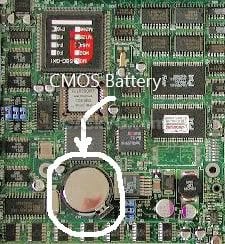This tutorial will guide you to hide or show any specific Control Panel applet in Windows. This tutorial will work for all Windows versions: NT, 95, 98, Me, 2000, XP, Server 2003, Vista, Server 2008 and 7.

METHOD A: For All Windows Versions except Windows 95, 98 & Me
1. Open regedit and goto:
HKEY_CURRENT_USER\Control Panel\
OR
HKEY_LOCAL_MACHINE\SOFTWARE\Microsoft\Windows\CurrentVersion\Control Panel\
2. Under this key create a new key with the name
don't load , so the new path will be:
HKEY_CURRENT_USER\Control Panel\don't load
OR
HKEY_LOCAL_MACHINE\SOFTWARE\Microsoft\Windows\CurrentVersion\Control Panel\don't load
3. Now in right-side pane, create new
String value. Set its name to the file name of the applet which you want to hide, e.g. if you want to hide Display applet then set its name to
Desk.cpl now set its value to
no to hide it. If you want to show it again, either set its value to
yes or simply delete the String value.
To use the above mentioned method, you'll need to know the .CPL file name of the desired applet. You can search for .CPL in Windows Search or you can use help of following list which contains .cpl file names of almost all default Control Panel applets:

METHOD B: For All Windows Versions except Windows 95, 98 & Me
1. Open regedit and goto:
HKEY_CURRENT_USER\Software\Microsoft\Windows\CurrentVersion\Policies
2. Look for a key "
Explorer" under it. If its not present, then create a new one and give it name
Explorer.
3. Select "Explorer" key and in right-side pane, create a new DWORD value
DisallowCpl and set its value to
1
4. Now create another new key under Explorer key with the name
DisallowCpl so the new path will be:
HKEY_CURRENT_USER\Software\Microsoft\Windows\CurrentVersion\Policies\ Explorer\DisallowCpl
5. Select "DisallowCpl" key and in right-side, create new
String value with name
1 and set its value to the applet name which you want to hide.You don't need to use the .cpl file name of applet in this method. You have to put the applet label which you see in Control Panel.

e.g., If you want to hide AutoPlay applet, then create a new String value, give it name
1 and set its value to
AutoPlay. If you want to hide more applets, then simply create more String values with names
2,
3 and so on and set their values to the applet label.
METHOD C: For All Windows Versions except Windows 95, 98 & Me
This method is opposite of METHOD B. In this method, you'll tell Windows which applets should be visible and Windows will automatically hide the rest.
Its useful when you want to show a few specific applets and want to hide remaining applets. So you just need to create a few String values to tell Windows which applets you want to show. It'll save your valuable time.
1. Open regedit and goto:
HKEY_CURRENT_USER\Software\Microsoft\Windows\CurrentVersion\Policies
2. Look for a key "
Explorer" under it. If its not present, then create a new one and give it name
Explorer.
3. Select "Explorer" key and in right-side pane, create a new DWORD value
RestrictCpl and set its value to
1
4. Now create another new key under Explorer key with the name
RestrictCpl so the new path will be:
HKEY_CURRENT_USER\Software\Microsoft\Windows\CurrentVersion\Policies\ Explorer\RestrictCpl
5. Select "RestrictCpl" key and in right-side, create new
String value with name
1 and set its value to the applet name which you want to show.You don't need to use the .cpl file name of applet in this method. You have to put the applet label which you see in Control Panel.

e.g., If you want to show AutoPlay applet, then create a new String value, give it name
1 and set its value to
AutoPlay. If you want to show more applets, then simply create more String values with names
2,
3 and so on and set their values to the applet label.
Now Windows will only show the applets which you mentioned in String values, other applets will be hidden.
METHOD D: For Windows 95, 98 & Me
1. Open "
%windir%\Control.INI" file. Where "%windir%" denotes Windows folder which is present in system drive where Windows is installed.
2. You'll see a line saying
[don't load] in the file. If you can't find it, then create a new line at last.
3. Now under this line, you can set .CPL file name of your desired applet which you want to hide in following format:
filename.cpl=no
e.g.,
If you want to hide Display applet, then the syntax will be:
desk.cpl=no
You can create similar lines for other applets which you want to hide. The .CPL file name can be obtained from the list mentioned in METHOD A.
METHOD E: Using TweakUI Power Toy
You can also use Microsoft official powertoy "
TweakUI" to easily hide/show control panel applets.
Download TweakUI from
here. Run it and click on "
Control Panel" in left side section. Now in right-side list, you can easily hide/show desired applets by just enabling/disabling the appropriate applet checkbox.

Click on Apply button and you have done.
NOTE: This tutorial can also be used in case some applets in Control Panel have been disabled accidentally and you want to enable them again. Just follow the steps mentioned in above methods and delete the required string value or line.


























































